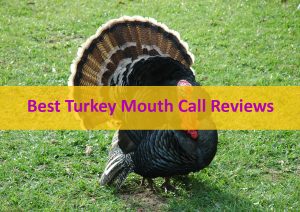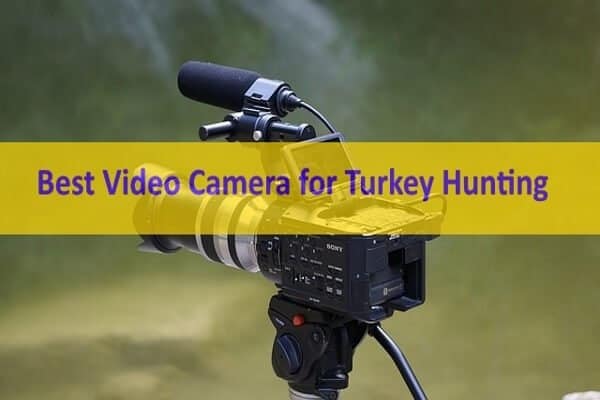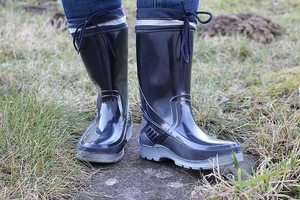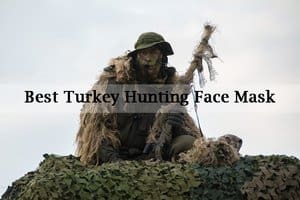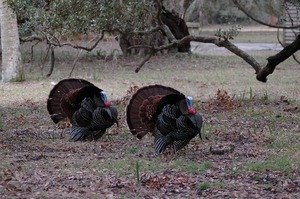Turkey Hunting 101 Guide – Beginner Tips and Advice
Our experts like to share product recommendations with you and hope you like them! Just to make you aware, CatchThemEasy may collect a small share of sales or other compensation from the links on this page.
Looking to have a great chance of hunting some North American wild turkey this upcoming season? Good stuff! We’ve gone ahead and put together the ultimate guide to hunting some turkey, with everything you need know for either getting started, or, improving your game. Like most forms of hunting, there’s many moving parts that need to be pieced together. You have to be tactical when turkey hunting, and above all else, you have to be patient. Let’s dive straight into the guide!
1. When Is Turkey Hunting Season?

Every state’s season dates and regulations are different, so first, before you even consider going after a turkey flock, check out your state’s full rules and regulations on what you can and can’t do. Your chosen state’s climate and general weather conditions throughout the year also play a significant role in determining when the season runs.
The typical hunting seasons for these birds usually run in the spring and the fall. Because the behavior of these birds are different during the different season, you’ll have to adjust your hunting approach accordingly. Here are some of the differences between spring and fall turkey hunting:
Spring
The spring is usually the mating season for these birds, which makes them more open and receptive to your calls. You can be more aggressive with your calling during the springtime as the turkeys will openly roam, looking for a mate. This makes it much easier in the spring as opposed to the fall, as typically you don’t need to break them away from a flock. You simply have more chance of catching and shooting a single turkey that roams towards your call and decoy setup during springtime.

Fall
The birds will look to group together as much as possible into flocks as they look to fatten up for the winter time. The approach you want to take here is to scatter them as much as possible, then use a call to try and attract them back to the same area. This gives you the chance to setup in the area you scattered them at and get ready for a shot as they return and attempt to group up with the rest of the flock again. You should be less aggressive in your calling this time of year as they are less responsive to the calls, this is typically due to the fact that the turkeys are not looking to branch out from their chosen flocks.

2. Best Time Of The Day To Hunt Turkeys
Morning
The ideal time of time to hunt turkeys is in the morning. Usually, these birds will roost in the trees at night, and as the sun starts to rise in the mornings, they fly down from the trees to the ground to look for their breakfast. One of the hardest parts of these hunts is getting out your bed extremely early in the morning and getting setup, and ready for the birds before sunrise. As long as you are setup correctly, this time of the day gives you the absolute best opportunity to catch one while they are on the ground first thing feeding.
Afternoon
Of course, it’s not possible for everyone to hunt in the morning for various different reasons, but don’t put off your hunt, hunting turkey in the afternoon is still a viable option for you, with some top hunters even recommending the afternoon over morning time. You don’t want to be calling as much in the afternoon as you would in the morning, this is due to the fact that the birds themselves don’t do as much calling at this time of the day. You have to be even more patient in the afternoon as you’re simply not going to have as many opportunities, but balancing this out, can be the fact that a lot of the average hunters will have left the area before afternoon, easing the pressure on the birds.
3. Best Weather
Simply put, there are no perfect weather conditions for hunting turkeys, whenever you get the chance, just get out there. You can generally hunt turkeys in any weather conditions, though some conditions are more ideal than others.

Turkeys are a lot like humans when it comes to the weather. They are typically more active on calmer, clearer days, where the conditions are neither too hot nor too cold. Mild conditions are perfect for them to come down from their roost tree, to actively move around and feed. If the conditions are cloudy and rainy, then they are a little slower and will take longer to come down from their roost trees.
This would obviously mean that you should hunt flocks or turkeys when the weather conditions are mild right? Well, yes and no. Clearer, calmer conditions are ideal to both turkey and hunter, just simply due to the fact that cold weather, rain, and wind makes everything twice as difficult. The upside of poor weather conditions for the hunter is that, although you have to listen carefully to locate these birds and that can be difficult in windy conditions, turkey are much less vigilant and aware of potential threats when feeding in poorer conditions.
Top Tip: You can hunt turkey in nearly any weather conditions.
4. How To Find A Good Spot
Much like deer hunting, the best thing you can do is go out a few weeks before the season starts and scout. Good scouting ensures that you make yourself aware of the area of land you intend to hunt for wild turkey and familiarize yourself with all the features such as ridges, hillsides, trees etc. If you want to up your scouting game, then you can always setup some trail cameras as you would for deer, allowing to get a better idea of what the turkey activity is like in the area before you setup.

Before the day of your hunt, locate the roost trees that the wild turkey will rest on at night, as this will give you a better idea of where they are likely to land in the morning when looking to feed on the ground. Grab yourself a good pair of binoculars and start looking for roost trees which are generally found on higher ground, which is usually to allow the birds to stay out of reach of predators in the area.
When looking to be in the ideal spot to get a shot off on the birds, you don’t want to be positioned directly under the roosting trees as they’ll just fly over the top of you making it impossible to pull off a safe shot. You want to work out from your previous scouting work where they’re going to potentially land, and then position yourself roughly within 40 yards of that landing spot. Their landing area is the key to where you want to be positioned for the hunt, that’s why some planning and groundwork through scouting is essential.
5. How To Dress
Because turkeys have excellent eyesight and can spot you easily, it’s essential that you’re dressed appropriately in the right camouflage gear. You should be covered head-to-toe in quality camouflage gear, including a face mask and ideally painting your face with some camo.
The best camo color really depends on what season you’re after turkey and the backdrop that you intend on hunting from.
During spring when the trees and grass are growing and look a luscious green color, you should look to wear a lighter, brighter style of green camo to match.
During the fall, there’s obviously going to be lots of dead leaves on the ground as well as the grass being much darker, this means that you’ll want your camo to be much darker and a little browner to blend in.
Here's a video on how to apply face camo:
6. How To Setup
Your setup and gear will greatly depend on whether you decide to shoot from a blind or sitting against a tree. For example, if you decide that you will hunt from a blind, you do not need to be dressed in backdrop camouflage or use a vest seat cushion. If you use a blind then you will instead need a chair that sits at the right height for you to take a shot from the blind. You may also be into filming your own turkey hunts, in which case a good camera would be required.
Here’s a standard rundown of the gear that you will be likely to use when turkey hunting:
What Choke To Use?
For a clean, ethical kill, you should be aiming for the neck and head area of a turkey when shooting. Aiming for such a small area, especially at 30-40 yards can be very tricky with a shotgun due to pellet spread.
This is why you’ll want to have a full choke attached to the shotgun as it ensures you have a very tight, constricted pattern spread with your shot. The big downside to this is the fact that this constricted pattern spread increases your chance of missing the shot, but remember, it’s all about landing a clean, ethical shot on the bird.
How Many Decoys Do I Need?
This all comes down to whether you are spring or fall hunting. As we touched on earlier in the article, during the spring turkeys are not bunched together as much and typically move around alone when breeding. You’ll want to mimic this and be as realistic as possible by using 1, potentially 2 decoys to draw one in.
The fall will require more decoys to be set up as the birds like to move around in groups (flocks), therefore, to make sure the birds don’t suspect anything unusual you need to match this by using around 4-6 decoys to attract them.
What Size Shell For Turkey Hunting?
There is no one size fits all shell here as other factors such as the type of shotgun you have and the distance you’ll be shooting at coming into play. In terms of controlling your patterns and bagging a clean kill, there are 3 sizes of shells that you would typically consider when turkey hunting.
#4 – Powerful enough up to 40-50 yards, but does not create a dense enough pattern beyond 35 yards, meaning there’s more chance of missing those vital parts.
#5 – The most common choice. Creates a tight, powerful pattern up to 45 yards.
#6 – Works well up to 35 yards, but lacks the energy of the other two sizes for penetrating at these distances.
Always be sure to test different sized shotgun shells and chokes for yourself to find out what works best with your gun.
For more details on shell sizes for turkey hunting, check out this resource.
How To Sight In Your Shotgun:
7. How To Attract Turkeys For Hunting
Assuming that you’re hunting the turkey when they are naturally feeding and roaming around, you’ll want to use a combination of calls and decoys to attract them.
Calling
Using a call is very important in locating and attracting turkeys out in the field. There is no one type fits all call for hunters, as each one will sound different for each user and will ultimately come down to preference. The one thing that each call has in common is that they all take some practice to get right, so you will have to put the time in to learn your chosen call. There are 3 main types of calls that you might consider for turkey hunting – mouth, box, and slate.

Mouth
Probably the hardest of the 3 to learn and takes a lot of practice and patience to pull off. There are two different styles of mouth calls, the first is a standard locator call which as the name suggests is used to find the birds, the second is a diaphragm call which is used to attract the turkeys to a certain area.
Box
A box call is the easiest of the 3 and is ideal for a beginner turkey hunter to learn. It still takes time to learn, but doesn’t have as big a learning curve as the other 2. This is where you use 2 hands, 1 to hold and move the paddle and the other to hold the box.
Slate
You can make just about any turkey noise with a slate call (or pot call if you like), making it another tricky option to get used to. Essentially what happens here is that you create friction by running a striker over a sounding board which then projects the noise out the bottom. There are so many different options and striking techniques that can be used with a slate or pot call, but it’s maybe not the best option for a beginner.
Top Tip: Get someone else to call while you shoot if you can.
What Should I do If The Turkey Don’t Gobble Or Are Silent In The Woods?
If you’re unable to locate the turkey or get a response from them then you’ll want to use certain predator calls to make them shock gobble. The idea behind shock gobbling is that you use a call that resembles that of a predator to the turkey, and they respond to this as they naturally would if they spot a predator, making you aware of where they might be.

As mentioned above, you can provoke a shock gobble by using a predatory call such as that of a crow, owl or even coyote. However, there are some other things that you wouldn’t expect to provoke a shock gobble that work such as slamming your car door, thunder or even the sound of a random shotgun shot. The absolute best time to get a shock gobble out of the turkeys is first thing in the morning, just as the sun rises and they’re still on their roost trees.
If the turkeys have gone silent after locating them and you’re not sure if they have responded, the best thing to do is sit and wait. Sometimes a turkey may be on its way towards you through the woods but will not make any noise in doing so, this is why it’s important to be patient and avoid the temptation to overcall. If you have located the birds and they have responded to your calling, then give it some time before calling again.
Top Tip: Practice soft calling as opposed to loud calling.
8. How To Hunt Them On Public Land
If you’re a keen deer hunter then you’ll be aware that hunting them on public land presents its own challenges. Sometimes there might just be too many hunters with the same goal, in the same area, causing too much pressure on the deer.
Turkey hunting is really not that different from deer hunting. If you’re looking to hunt on public land then, be aware that too many hunters will cause pressure on the flocks.
This can sometimes be used to your advantage if you understand where the other hunters are positioning themselves and have some good knowledge of the area, then you can potentially work out where the turkeys are being pressured to and position yourself there.
Before hunting on some public land for these birds, do your homework like you would when deer hunting and scout the land as much as possible throughout the year. If you don’t have the time for that, then at the very least have a look at the area the night before and get a feel for it.
9. How To Clean A Turkey After Hunting
Final Word
The most important thing to remember when turkey hunting is that you HAVE to be patient. If you have an unsuccessful season, then don’t be too disheartened as even the pro hunters find turkey hunting challenging. Don’t look at the season as a failure, take what knowledge and experience you have gained and take it into next seasons hunt. Keep building up your experience, read as much as you can on the topic and make sure that you speak to experienced hunters that can pass on their knowledge and advice.

